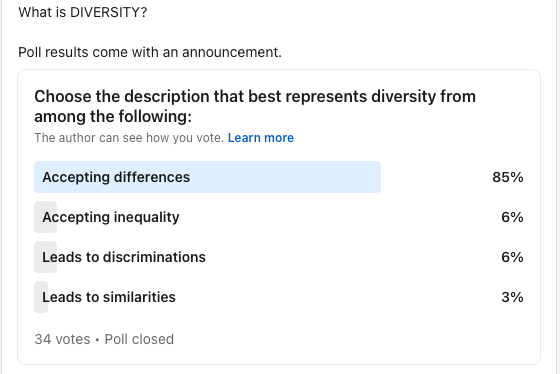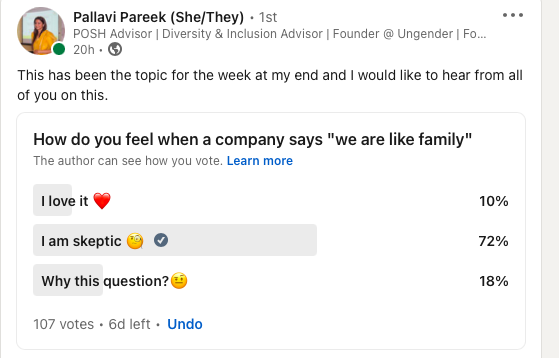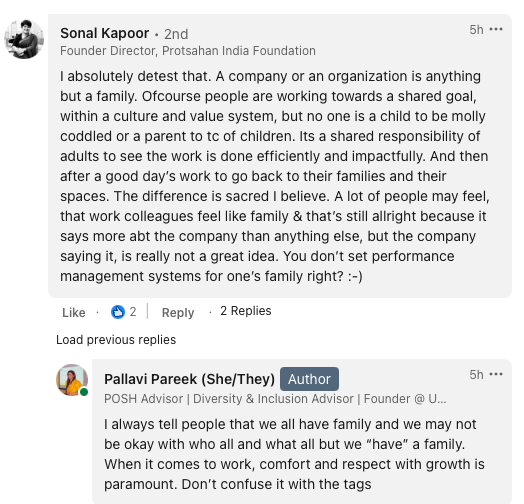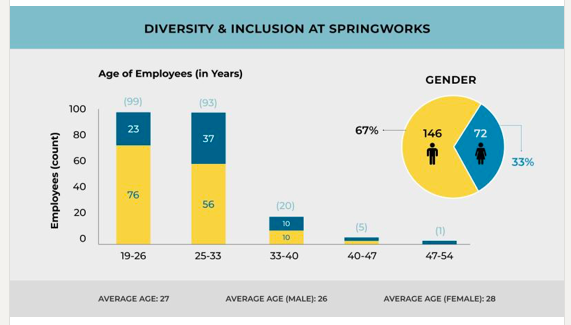Understanding Diversity And Inclusion: Where to begin

There’s widespread agreement on the need to improve diversity and inclusion in the workplace. But it’s not easy to deliver on the promises made. Too many companies struggle with understanding the nuances involved with diversity, equity & inclusion (DEI) initiatives, and many aren’t even sure as to where, to begin thier DEI journey.
This article is based on the webinar conducted by Springworks x Conduct on “Understanding Diversity and Inclusion – A beginner’s session. In this article, we will unpack what diversity, equity, and inclusion mean. We will also talk about seven simple strategies that companies ( irrespective of their size & industry) can adopt to kick start with DEI.
What is diversity, equity, and inclusion (DEI)?
Diversity, equity, and inclusion – frequently referred to as DEI – is the umbrella term for the programs, policies, strategies, and practices that execute a company’s mission to create and sustain a diverse, equitable, and inclusive environment, no matter what an employee’s ethnicity, sexual orientation, gender identity, physical ability, religion, age, marital status, socioeconomic status, national origin or veteran status.
A culture of diversity, equity, and inclusion is not only critical to the success of diversity initiatives but creating an equitable and inclusive workplace also creates a positive employee experience.
What is workplace diversity?
Springworks conducted a LinkedIn poll to understand what people understand by the term “diversity”.


Diversity does not only hire individuals of different races, ethnicities, genders, ages, religions, disabilities, and sexual orientations, but also those with diverse experiences, education, skill sets, beliefs, and personalities. An organisation is considered diverse when it not only mirrors the society in which it operates but when its inclusion efforts also tear down institutional bias.
What is workplace equity?
Where equality gives everyone access to the same opportunities, equity in the workplace means that there’s proportional representation in those same opportunities. In other words, equity will eliminate barriers and level the playing field.
What is workplace inclusion?
Once you actually have diversity, the next is to create a culture where all employees are given the equal opportunity – and feel welcome – to participate and contribute. you begin to ask the fundamental questions about: ‘Are we inclusive?’, ‘Are we being equitable?’, ‘Do people feel like they belong?’, and ‘Can everyone bring their best selves to work?
Diversity and inclusion isn’t a one-size-fits-all approach as each culture has its own unique circumstances. Furthermore, one can never fully anticipate the comments, situations and behaviors that will unfold. It’s paramount companies and HR prioritize having policies in place to demonstrate what’s acceptable and what isn’t.
Where do we start with Diversity, Equity & Inclusion
Once you have understood these concepts, the next thing companies stumble on is where to begin amidst 100 other priorities.
Here are seven strategies that companies and HR can adopt for building inclusive workplace culture: –
1. Drive Change Through DEI Training: Training comes in many forms such as sessions, team-building exercises, workshops, and courses, to name a few. The goal of training employees is to make them aware of their own unconscious bias, instill a new perspective, bridge gaps, and strengthen relationships. Leaders, especially middle managers, need to be fully on board and dedicated to educating themselves and being aware of their own unconscious bias. To give an example, most times companies tell their employees that “we are like a family”. But do employees want to be referred to as a family?
We did a LinkedIn Poll to understand how employees feel when they are called as a family: –



The majority is skeptical when a company says “we are like family”. If you think about or treat your employees like family, you’re probably doing more harm than good. Sure, it sounds nice. And some aspects of a family-like culture are important to cultivate – caring, belonging, respecting others even if you don’t like them. But leading an organization as if it were your family is an inappropriate and antiquated leadership practice. Today, trying to run your organization as a family – or even merely saying that you do — will hold you back, and may even backfire.
Sonal Kapoor, founder-director at Protsahan India Foundation, shared her views on calling a team as a family.



2. Foster A Supportive And Safe Space – Upholding a safe space for every employee means asking hard questions, seeking feedback, and creating discussions to build better relationships. For too long, employers have been shying away from difficult and sensitive conversations for fear it would create a divide within the workplace. Contrarily, pretending these differences don’t exist is what creates the divide. Hence, companies should focus on creating a safe space where there is room for open communication.
3. Practice Collective Accountability- Every culture has rules that must be abided by in order to keep the workplace functioning and healthy. Violators should face the consequences, regardless of their rank or title. DEI cannot be one person or department’s or only manager’s responsibility. Turning a blind eye to one situation is how toxic cultures breed. Leadership and management are the ones who set the tone of the culture and employees, candidates and consumers look to them to see if they’re practicing what they preach.
4. Collect Data – The next step is to understand where you are in terms of metrics. This will require collecting and analyzing your people data to assess the demographics of your organization – including your leadership team. Once you have the data, you can set benchmarks and metrics for the DEI goals you want to achieve.
Here is a snapshot of Diversity & Inclusion at Springworks


Data can be a powerful tool to provide insight into the current state of DEI within your organization, highlight the biggest shortcomings, and help gain control over certain areas of your business where bias may be most present. When hiring at scale, data is a particularly powerful way to identify systemic instances of bias and place control measures to lessen or eliminate them entirely.
For example, Conduct gives you live insights into the diverse portfolio and the cultural matrix of your teams. It will also help you to track the team’s learning journey through our data reports.
5. Address the unique needs of your employees
We all have blind spots. Encourage employees to voice their thoughts and concerns to have meaningful conversations that help move the organization forward.
Pallavi, founder of Ungender says we first had carrots for employees then silver carrots followed by diamond-studded carrots but people are still leaving organizations. That certainly means we are falling & falling repeatedly to understand the needs of employees.
6. Stop looking for a culture fit- Look at your talent pipeline and the strategies your talent acquisition team uses to attract new employees. Be strategic about where you’re posting open positions. Go beyond homogeneous networks to tap into diverse talent pipelines you might have previously ignored and/or didn’t realize existed.
For some demographics, you have to be proactive with your search strategies by posting on certain websites, advertising in specific publications, or doing outreach through dedicated organizations.
7. Set measurable targets – Whether for interviews, pass-through rates, or metrics around demographics of who you hire, organizations that set measurable targets will be more successful in fostering a diverse, equitable, and inclusive workforce. Ready to take it one step further? Follow in the footsteps of brands like Adidas and make a public commitment to hiring from underrepresented groups. Another way organizations hold themselves accountable for measuring DEI progress is by tying measurable outcomes to compensation – especially for those in leadership, but also to the overall bonus pool. Microsoft, as an example, has said that bonuses for their entire company will be tied to successfully achieving their diversity metrics.
As you hit or miss your benchmarks continue to be transparent in sharing your progress. The world is facing significant challenges, and it will take all the perspectives we can bring to build the future we want for everyone.
About the author: Vanita is a lawyer and Lead – Research & Communications at Ungender. She writes extensively on building inclusive workplaces, gender issues, social inequalities, and public policy.
Ungender Insights is the product of our learning from advisory work at Ungender. In our initiative to build inclusive workplaces for all individuals, we continue to educate and advise leaders on the same. Write to us at contact@ungender.in to know more about our advisory services.
Read our insights about diversity, legal updates and industry knowledge on workplace inclusion at Ungender Insights. Visit our Blog.
Sign up to stay up-to-date with our free e-mail newsletter.
The above insights are a product of our learning from our advisory work at Ungender. Our Team specialises in advising workplaces on gender centric laws.
or email us at contact@ungender.in




